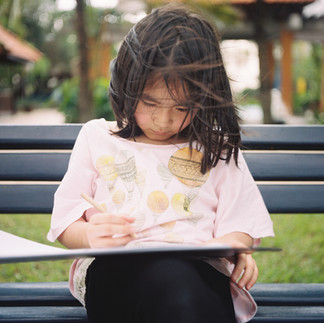How to Build a Free Outdoor Learning Space
- trovephotographyco
- May 5
- 2 min read
Bushcraft, Mud Kitchens, and Nature Play to Help Kids Thrive

Creating a rich, stimulating outdoor learning space doesn’t have to break the bank. In fact, some of the best tools for helping kids grow come straight from nature itself. Whether you have a backyard, access to a wooded area, or a small patch of green space, you can build something magical: something that encourages curiosity, problem-solving, creativity, and responsibility.
Let’s explore how to build an outdoor play and learning environment that feels like a child’s wonderland—all for free.
1. Build a Mud Kitchen with Recycled Materials
A mud kitchen is a hands-on favorite for sensory play and creativity.What you need:
Old wooden pallets or crates
Mismatched pots, pans, and utensils from the thrift store or your own kitchen purge
Plastic bowls, measuring cups, or anything that can be repurposed
Set up a station with dirt, water, and “ingredients” like leaves, flowers, or pinecones. Add labels like “Rainwater Soup” or “Dandelion Pie” for fun roleplay ideas.

2. Bushcraft Basics for Kids
Bushcraft teaches resourcefulness and awareness of nature. You can introduce safe, beginner skills such as:
Stick shelter building (great for problem solving)
Knot tying (use colorful yarn or ropes)
Whittling soap or soft wood with supervision
Identifying safe and interesting natural materials like bark, moss, or lichen
Make it feel like a survival adventure. Kids LOVE pretending they’re in the wild.

3. Create Wattle Fences and Fairy Garden Borders
Wattle fencing is an old technique of weaving flexible branches between upright stakes. Perfect for little hands. Use it to:
Line your walking paths
Create a garden bed edge
Build a “secret fort” or fairy village boundary
Not only is this practical, but it also develops fine motor skills and appreciation for natural building methods.

4. Design Simple Walking Paths with Nature’s Materials
Mark trails with:
Painted stones
Tree stump stepping circles
Flattened sticks or pine needles
Encourage mindfulness by making this a “quiet path,” a “bug hunt trail,” or a “thinker's walk” where they can walk and reflect.

5. Add Learning Stations with Found Objects
Create zones for different types of learning:
Nature Art Table: a flat log or table for leaf rubbings or stick sculptures
Sound Garden: hang old kitchen items to make wind chimes and drums
Weather Station: add a homemade rain gauge, thermometer, or wind sock
Observation Area: a log to sit on with a notebook for nature journaling
6. Plant for Purpose: Learning, Taste, and Texture
Don’t underestimate the power of a wild garden. Let kids:
Plant herbs or veggies (like basil, chives, radishes)
Observe pollinators with sunflowers or milkweed
Explore sensory textures with lamb’s ear or mint
Let the space feel a little wild—it teaches kids how nature thrives when given freedom.

Why This Matters
A free outdoor space teaches children:
Self-sufficiency
Risk management
Mindfulness
STEM foundations
Creative expression
And best of all … it gives them a chance to connect with the world on their own terms.

By Brianna VanValkenburg









Comments